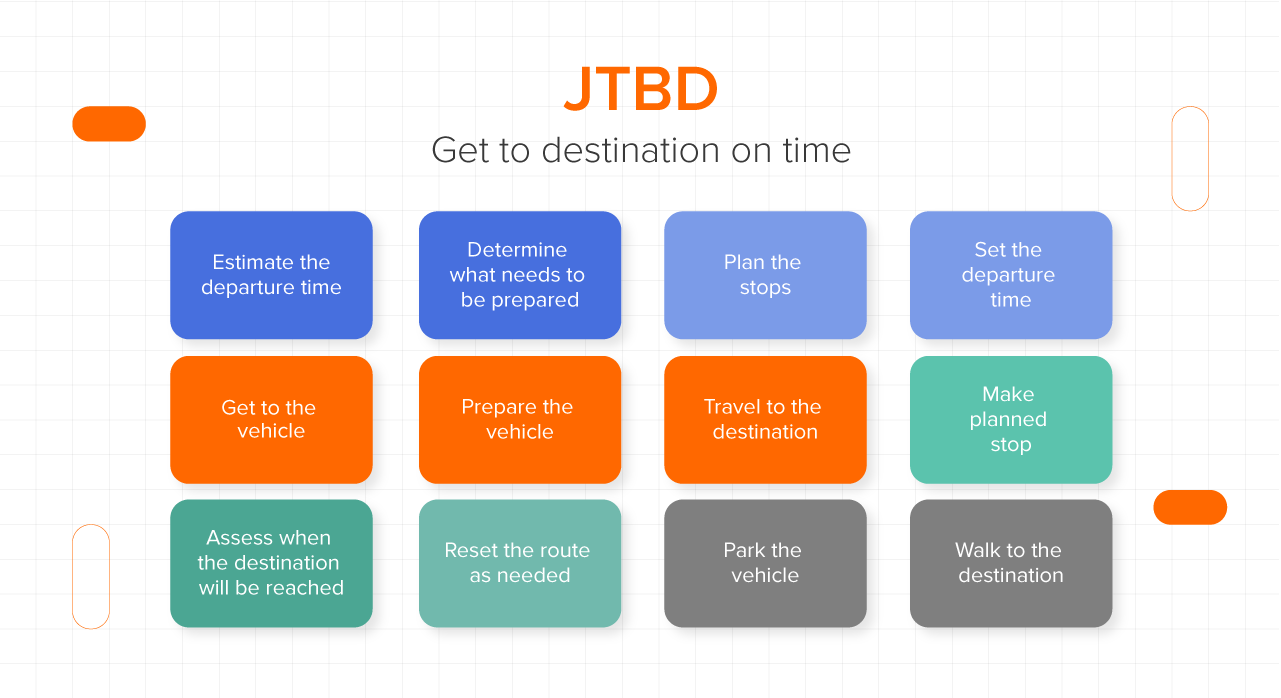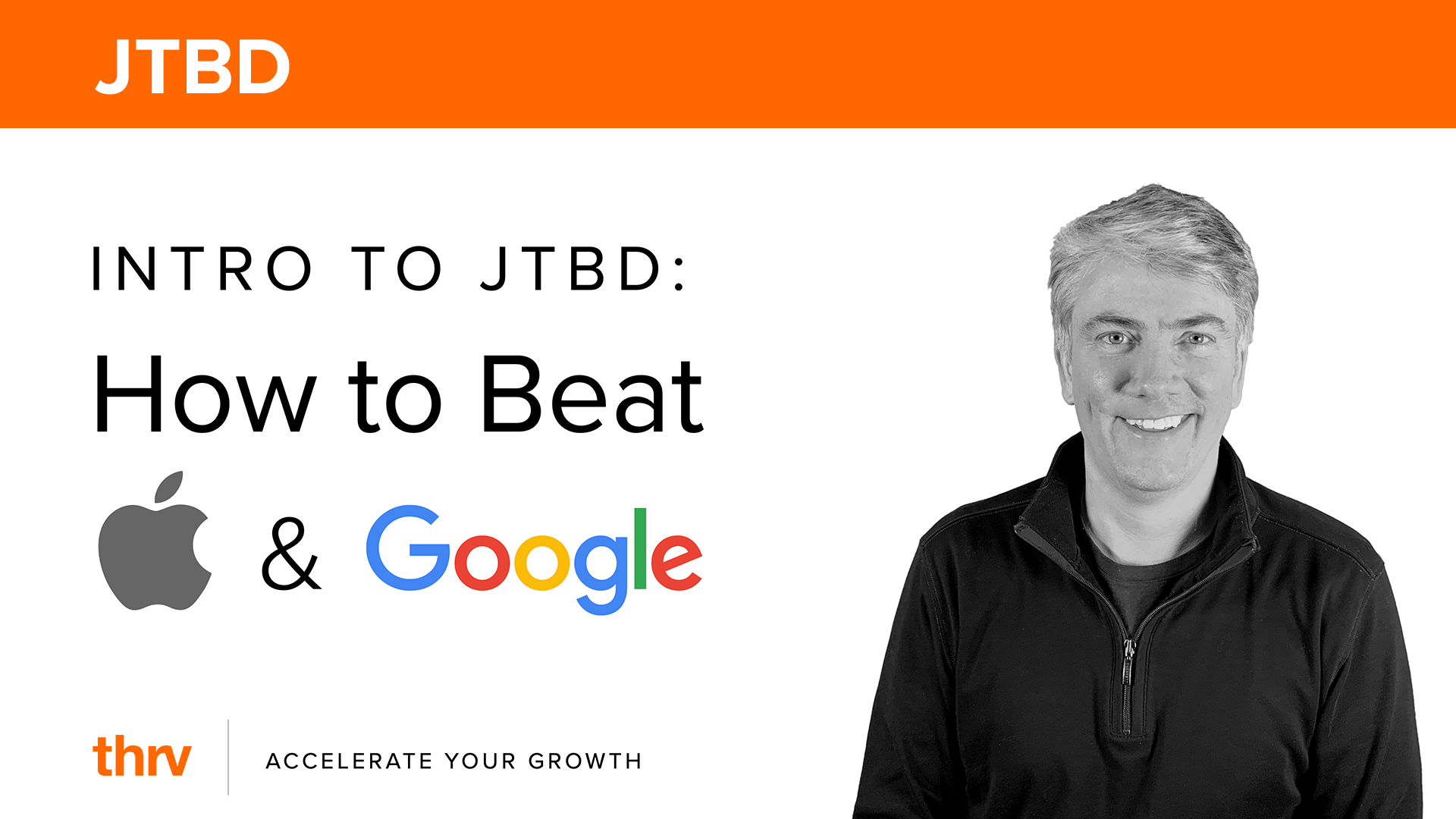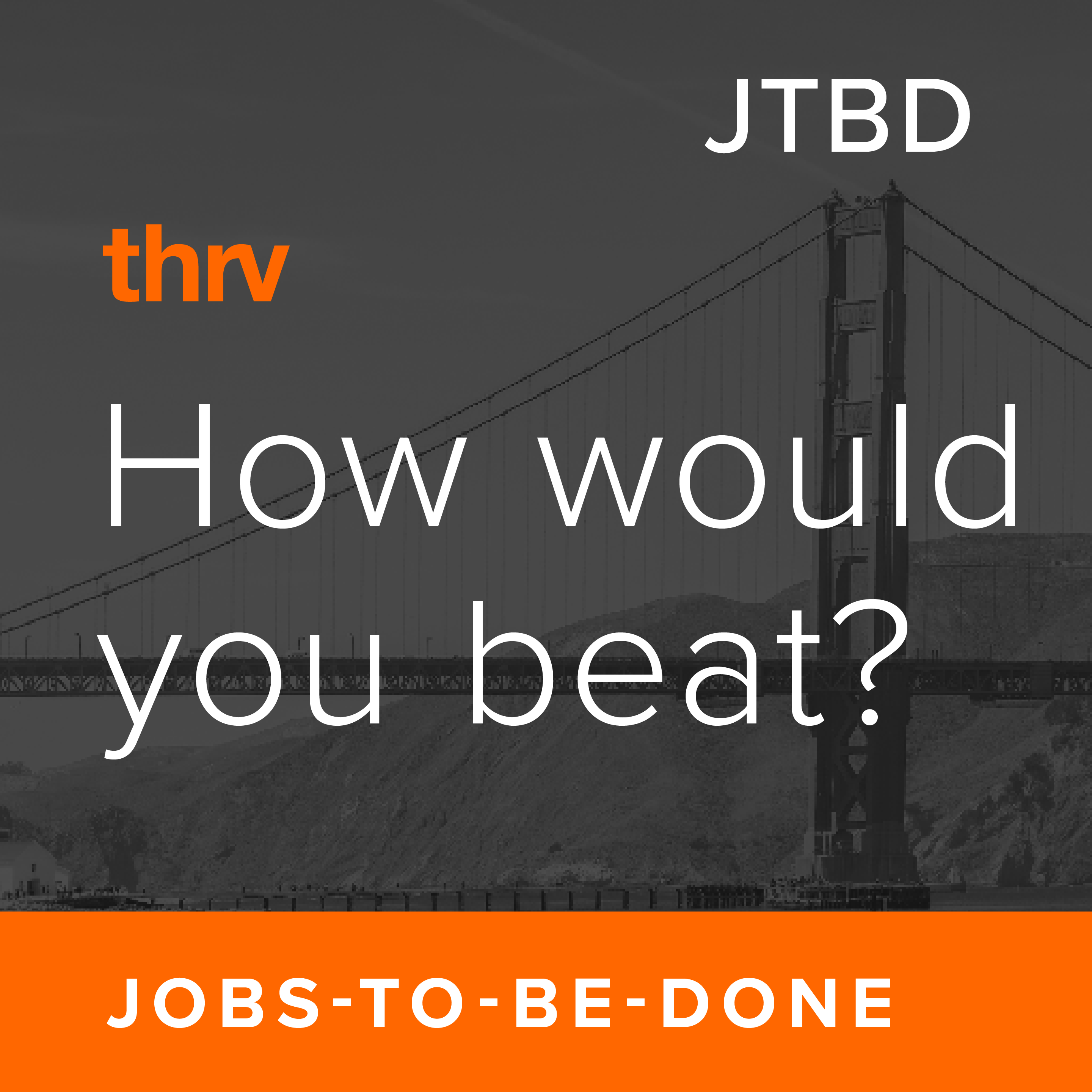August 2, 2022
Differentiating your product from the competition
Effective product differentiation starts with everyone on your team focusing on your customer’s unmet needs so that you can build, market, and sell a product that satisfies those unmet needs better than your competitors.
Often, companies attempt product differentiation based on features, which includes making sure they have all of the features their competitors have.
The product team tries to get ahead of the competition by building all the features the competition has and then some. The marketing team is focused on your plethora of features while the sales team demos them.
Meanwhile, your customers are left wondering, “What are all these features for and why are your features better than your competition which also has most of those features?”
This is a hard question for your customers to answer because they don’t want features, they want to get their job done.
The goal is to achieve product differentiation without playing feature catch-up and while building fewer features than your competitors. Here’s how Jobs-to-be-Done can help you do that.
Formulating a differentiation strategy using Jobs-to-be-Done: getting started
The Jobs-to-be-Done (JTBD) theory frames the idea of the market differently. Instead of defining your market using your product, you define your market using your customer’s job-to-be-done. Your customer’s job-to-be-done is the goal that they try to achieve by using your product.
Here are some examples of jobs-to-be-done:
- Get to a destination on time (an everyday JTBD for lots of people)
- Restore blood artery flow (a JTBD for surgeons)
- Optimize cash flow (a JTBD for CFOs)
- Get a baby to sleep at night (a JTBD for parents or nannies)
- Create a mood with music (a consumer JTBD)
When you define your market using jobs-to-be-done, you focus on a stable target, rather than a moving target. Focusing on feature catch-up with your competitors is a race you're nevr going to win - not to mention that it is the equivalent of trying to hit a moving target.
We’ve seen lots of companies - even some of the world’s leading brands - fail miserably when they play a feature catch-up game. A classic example is the Microsoft Zune. Microsoft seems to have made two errors: One, they most likely saw the market as the iPod market (or in other words they defined the market using a product rather than a JTBD). Two, they were simply trying to play feature catch-up with the iPod. The Zune tanked miserably and Microsoft lost nearly $300 million in one quarter alone.
The problem was that the market wasn’t the iPod market. Instead, the market was the “create a mood with music market”. iPods were fired in favor of streaming devices just like they were hired as a replacement for CDs, who were in turn hired as a replacement for cassettes, and the records that came before them.
If the number of features was a deciding factor for winning in a market, how come Pandora - which launched with just one simple “hit play” feature - eventually beat the iPod? Because it was better at enabling the customer to achieve their job of “creating a mood with music”.
So what if, instead of getting carried away by features, you focused on helping the customer to get their job done as your differentiation strategy?
Where can you differentiate?
Let's look at a few differentiation strategy examples, using JTBD
Differentiation strategy #1: Provide a better customer experience by getting all 3 types of JTBDs done for your customer
Your customers have three types of jobs-to-be-done within the main JTBD: functional jobs, emotional jobs, and consumption jobs. The functional job is the goal of the customer, the emotional job is how they feel or how they want to be perceived when doing the job and the consumption job is the tasks they might have to perform to use your product or any solution that helps them get the job done (like reading a user manual or downloading an app).
You can compete on any of the jobs. There are many examples of product differentiation where brands that break into a market by simplifying the consumption job and then go for a win by really acing the functional job. Netflix is an excellent example of a company that achieved this. The Netflix we know and love today was initially a DVD mailing service that made it faster and more accurate to get the video you wanted to watch, a consumption job.
Here’s what they did: When Netflix launched its DVD mailing service it seems to have been targeting the customer JTBD “Get entertained” which had existing solutions such as “watch a movie” (among others). The problem was that in order to consume that solution, people had to drive to a DVD rental store like Blockbuster and spend time going through their collection to make a selection, and then they would bring home the DVD. Netflix initially helped with the consumption job of “bringing home the DVD” and over time improved on the entertainment functional job by licensing and developing content.
Differentiation strategy #2: Enable a faster and more accurate functional job
Alternatively, companies that have a sufficiently strong product or service in place can take on the customer’s functional job right off the bat.
In the late 1800s, Kodak introduced the first “camera for amateurs” or the Kodak brownie which could be operated by anyone, versus the complex, time-consuming, prone-to-error cameras that existed before it. The Brownie made the functional job of “capture a memory” far faster and more accurate.
Differentiation strategy #3: Cater to other needs and struggles within the job for the same segment.
When you look at a space where one player has a near monopoly, you might feel like you have no choice but to back off. That’s when the Jobs-to-be-Done approach can help you identify opportunities that you might not be able to see otherwise. Opportunities become visible because you are able to see that some needs in the same job-to-be-done might still be unmet by the existing solutions.
Let’s look at Waze and Google Maps: One could argue that Google Maps owned the “get to a destination on time” market when Waze launched, but Waze targeted the unmet need of “resetting a route based on traffic conditions.” This was really hard to do with Google Maps at the time. Waze grew extremely fast by satisfying this unmet need and Google acquired Waze for over $1 billion. This is example of product differentiation using jobs-to-be-done to zero in on other needs and struggles within the job.
Differentiation strategy # 4: Target other needs for a different target segment
Even after Google Maps and Waze, there might still be unmet needs for some segments in the “Get to a destination on time” job-to-be-done. We can break jobs down into steps and needs. There tend to be 8-18 steps in every job-to-be-done and dozens of needs. For example, here are the steps in “get to a destination on time”.

If you were to analyze how effective Google Maps is at each step, you might notice that it’s not particularly fast to plan your stops using Google Maps if you have a lot of stops in a day. We actually confirmed this in a survey and found that there is a segment of people who make frequent and unfamiliar stops who find that determining the optimal sequence of their stops is difficult.
There is an opportunity for product differentiation here: We can focus on this segment and satisfy their unmet needs. Because this segment is smaller than the broad market, it is likely uninteresting to Google and so we can grow a new business by focusing on it.
Similarly, when Google Sheets launched, Excel owned the “spreadsheet” market. Financial analysts and accountants were particularly loyal to it. Google Sheets achieved product differentiation when targeted consumers who were trying to get different jobs done and satisfy different unmet needs.
How do you stay focused or evolve your differentiation strategy in a dynamic marketplace?
1. Make unmet needs the focus of your product roadmap
The customer’s job-to-be-done remains stable over time, but the degrees to which needs are unmet change as new solutions hit the market. That’s why you should have customer validation even before ideas are allowed on the drawing board and through every stage or product development.
Microsoft once upon a time listed feature ideas on cards, shuffled them and had customers arrange them in order of importance. You have to credit this process with at least including the customer’s point of view but we wouldn’t recommend this tactic because you could get a lot of false positives with this method. A feature might sound great, even amazing (with an exclamation mark) to a customer but that does not mean they want it, or will be willing to pay for it or that it will buy you their loyalty.
So instead of asking customers about their opinions on features, survey them to find out which needs in the job are unmet. Ask questions like “how difficult is it to plan the optimal sequence to make planned stops?” if you are planning to build a feature around the “plan the stops” job step.
This approach can give you insights into whether demand will meet projections when you are planning to launch features or ramp up production based on some change in the world. Peloton could have avoided the cash flow/ excess inventory problems that it ran into if it had focused on asking these questions. Instead, they ramped up manufacturing to respond to a temporary spike in demand due to the customer need “to exercise” which was only unmet during the early months in the pandemic because gyms were closed to the public.
Fortunately, today you have at-a-click tools that let you get this customer input every step of the way. The thrv software, for example, has an inbuilt mechanism for you to interview customers about their unmet needs so that you can differentiate your product successfully.
2. Keep an eye on evolving technology
A new platform need not be bad news or a threat. Instead, you need to think about how it can help you get jobs done faster and more accurately.
For instance, should Netflix invest in artificial and virtual reality? AR and VR platforms could be to streaming what streaming was to DVDs: a faster way of getting the “get entertained” job done. As we discussed a little earlier, Netflix has made a similar product differentiation move before and won in the market. They migrated from being a DVD shipping service to becoming a streaming service and saw great success. The question is, “will the new tech help customers to satisfy needs in the entertainment job better than streaming?”
Zoom is now taking share from airlines as people decide not to fly to x city to talk business or attend a conference; they do it remotely. What if airlines had foreseen this and bought web conferencing platforms back in the day?
Today, the software can bring speed and accuracy (and maybe even cost-effectiveness) to lots of customer jobs-to-be-done. Moreover, the software is quicker and less expensive to build. Just look at how Airbnb is taking share from traditional hotel brands. They didn’t go building hotels; they simply invested in a software that helped people with the “find accommodation while traveling” job-to-be-done.
3. A narrower focus might work better
You might start your product differentiation process by getting a small part of the job done for a wide variety of segments and then get your next stage of growth by getting more of the job done for a narrower segment with a high willingness to pay.
When you have a narrower focus there are chances that you will get the job done completely for a segment rather than get the job done to some extent for many segments. That’s already an example of good product differentiation. You’re getting the job done completely when competing solutions possibly leave the customer a little frustrated. Getting the job done really well for one segment is linked to their willingness to pay, and that’s why going narrow might be the key to profitability and revenue growth. A lot of platforms that target everyone do not yet make any money.
For example, Twitter targets pretty much everyone but is free to use and is not yet profitable. In our How Would You Beat Twitter podcast, we talked about this: what if instead they targeted investors who get information about companies to invest in on Twitter - they might be willing to pay to have this unmet need met, if Twitter could ensure, reliability, speed and accuracy of the information, for example.
To sum up, differentiating your product from the competition means being customer-focused. Effective product differentiation is all about understanding your customer’s problems deeply, and empathizing with their unmet needs and their goals independent of your product.
The thrv software brings ease and automation to customer focus. It automates the process of breaking down a customer’s job steps so that you can identify the needs at each job step, and there is a survey tool to determine unmet needs. Product, marketing, and sales teams that use thrv can generate growth on three horizons:
- Short-term growth by creating marketing and sales messaging that connects your solution to the unmet needs of your customers and the leads in your pipeline.
- Medium-term growth by aligning your product roadmap with the unmet needs of your customers and the leads in your pipeline
- Long-term growth by aligning your product innovation with the unmet needs of new customers in the market
You can use the thrv software on your own, or engage thrv to join your team and partner with you to execute the work and accelerate your growth.
Contact thrv today to get a free demo.
Posted by Jay Haynes View all Posts by Jay Haynes





